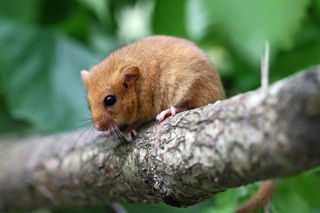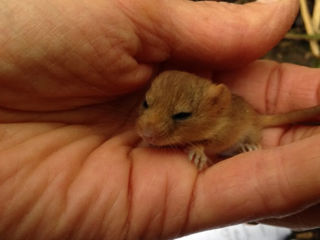Hazel Dormouse breeding and reintroductions
Muscardinus avellanarius
Sleepy, enigmatic and incredibly cute. This little mammal needs trees to survive and is critically endangered in the UK.
Wildwood’s dedicated conservation team are leading experts in breeding dormice for the national reintroduction programme, overseen by People's Trust for Endangered Species, which has seen over 1000 dormice successfully reintroduced to suitable woodlands where they have previously become extinct.
As studbook keepers for the species, conservationists at Wildwood liaise with the National Dormouse Captive Breeders Group to select and pair up the animals, ensuring a healthy and strong genetic mix for future reintroductions.
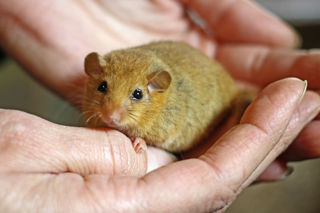
Why Hazel Dormouse?
The UK’s only native dormouse. Mainly found in the southern half of the UK, with strongholds in Devon, Somerset, Sussex and Kent.
Numbers and distribution have declined dramatically within the last 100 years; population declined by 50% since 2000.
The hazel dormice is a Biodiversity Action Plan species (BAP); a status that offers protection and conservation plans in order to halt or reverse the decline. It is fully protected by law, and cannot be intentionally killed, injured, or disturbed in its nest. A license is needed to trap, handle or collect a dormouse.
Dormice are excellent indicators of biodiversity, as habitats that support them also benefit the woodland, like birds, bats, and butterflies. For this reason, we are dedicated to reversing their decline and promoting the recovery of British woodlands to create healthier, more diverse ecosystems.
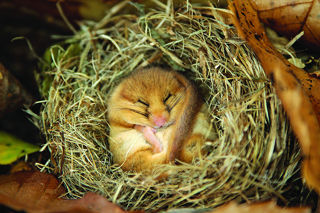
What is threatening their extinction?
Changes to woodland management and climate change are key factors negatively impacting hazel dormouse numbers.
Inappropriate woodland and hedgerow management alongside habitat fragmentation has become an increasing problem.
Climate change has also been highlighted, as warm spells during winter can wake dormice up prematurely, when no food is around. Cold springs and wet and windy summers can prevent them from foraging for food. This fluctuating pattern of weather can have long term effects on populations, affecting breeding success.
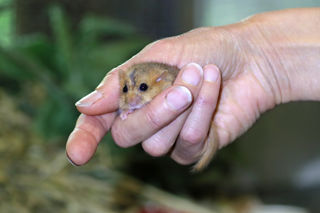
What does it mean to be a studbook holder?
Effective population management is essential for ensuring the sustainability and long-term viability of zoo-based (ex-situ) breeding populations, significantly enhancing their contribution to conservation efforts.
Ex-situ conservation works is the work conducted outside of a species' natural habitat to protect the species from extinction.
The foundation of successful population management lies in the collection and analysis of high-quality population data, making it a critical component of the process.
Studbook keepers meticulously record data like familial relationships, births, deaths and transfers which is analysed and used to ensure the genetic integrity of the species and the health of the reintroduced population.

-
Conservation news
Stay updated with our conservation news, covering all our projects and efforts to protect and restore wildlife and habitats. -
Support us
Join us in making a difference - support our work to protect wildlife and restore habitats for future generations.

